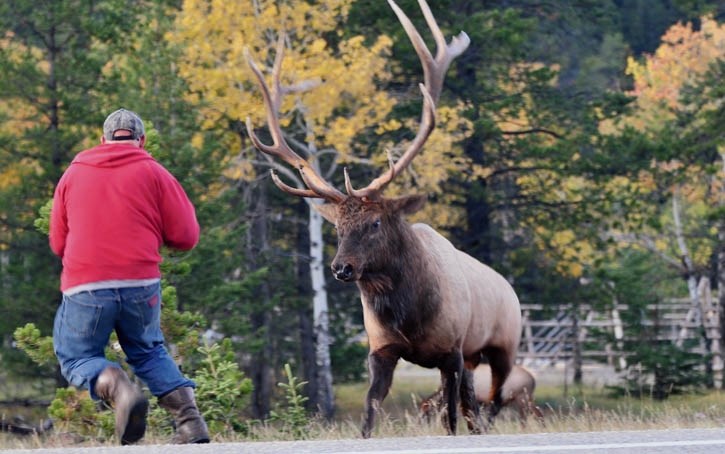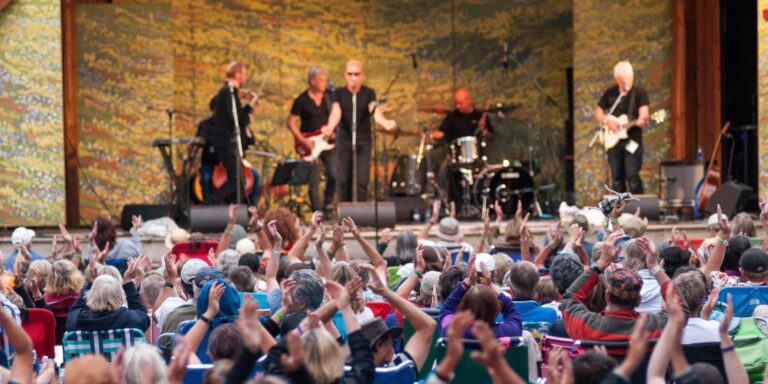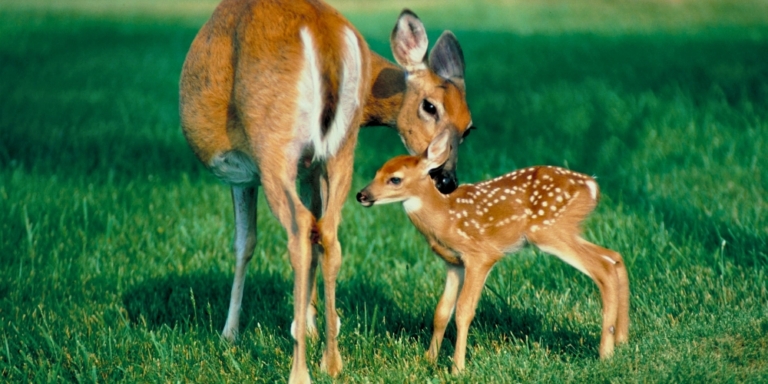Life can come at you fast, as a Canmore cyclist learned last week when an elk knocked him off his bike.
The cyclist was enjoying a ride near Rundle Drive in the Canmore’s southwest when the aggressive elk charged him.
Thankfully, the elk did not hit the man, only his bike. The cyclist walked away from the incident unharmed but shaken.
His wildlife encounter is a reminder that elk are wild animals and should be given space at all times of the year.
A similar incident happened last year where an elk mother in Banff National Park charged a cyclist and two hikers.
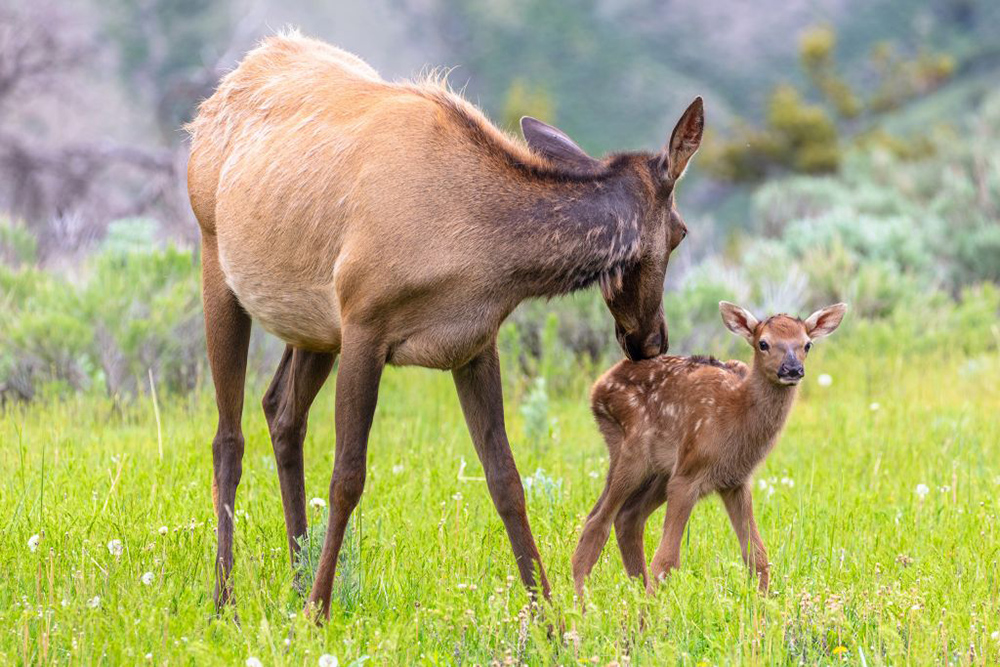

The Number of Urban Elk Growing
Elk are beautiful but generally timid animals, but they are not tame.
It’s easy to assume that elk don’t mind humans when they frequent public areas like parks, trails, fields, and golf courses.
In truth, the animals tolerate us.
Elk tend to live close to towns and cities for many reasons, and it’s not because they like us.
“When we’re dealing with elk, in general, we have to remember they’re wild and powerful animals regardless of how tolerant they may be of our behaviour,” Gareth Thomson, executive director of Biosphere Institute of the Bow Valley which oversees WildSmart, told the Rocky Mountain Outlook.
One of the biggest reasons elk favour towns is that there are fewer predators near populated areas. As a bonus, elk have plenty of extra food to choose from in town, including gardens and park flowerbeds.
Urban development and wildfires have also pushed wildlife toward towns and cities.
As urban elk become more common, it is important to educate ourselves about the animals.
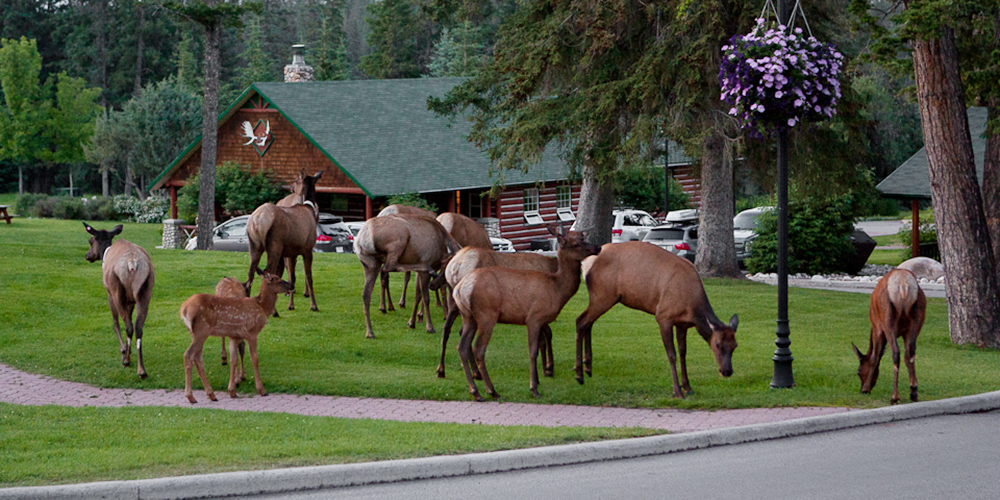

Read The Signs
Elk can’t exactly use words to express themselves. Thankfully, their body language is easy to understand.
The most common signs of an agitated elk include staring with flattened ears, raised rump hair, curled lips, and grinding teeth.
Parks Canada says that even more obvious signs include charging, kicking, circling, or following.
“If the elk is looking at you or seems alert or nervous or possibly has its ears folded back, that’s a great sign that you’re too close,” explains Thomson.
To avoid an unwanted encounter with an elk, give the animal at least 30 metres of space—that’s about three bus lengths of distance.
You should also travel in a group and keep children within arm’s reach. Dogs should always be kept on a leash, especially in Canmore, where leashed dogs are mandatory.
If you can’t avoid an elk encounter, act dominant by raising your arms and making yourself appear bigger.
Maintain eye contact and move towards cover like a tree or car. If knocked down, get back up and do not play dead.
Although an unwanted elk encounter might seem unlikely, it’s actually pretty common. Parks Canada data shows that between 2010 and 2021, there were almost 2,300 elk encounters.
It should be noted that most of these encounters were minor and did not involve physical contact between elk and humans, but they are still frightening.
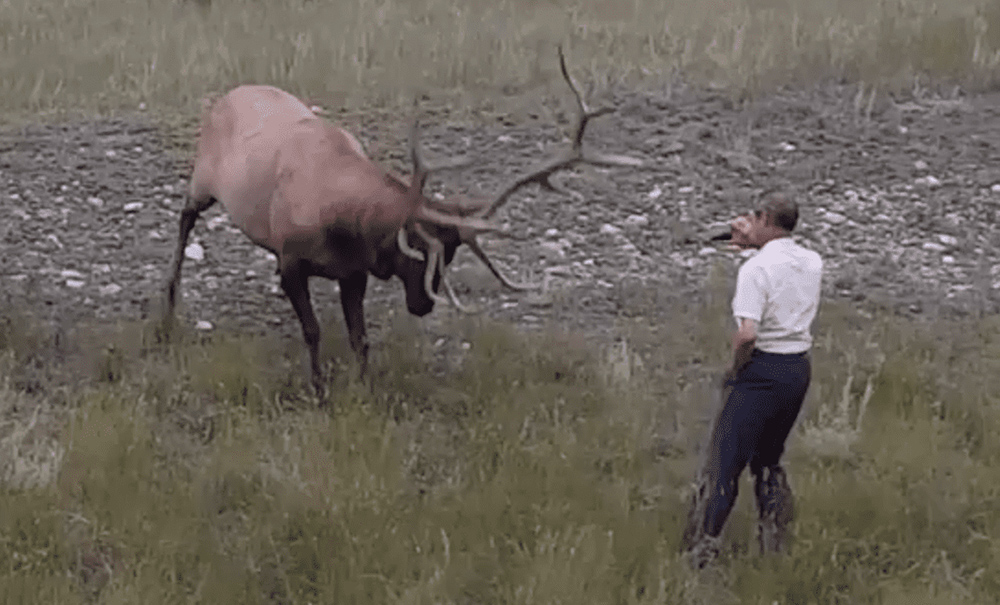

Sensitive Times
It’s important to give elk their space at all times.
However, there are certain times of the year when people should be especially careful, including rutting season and calving season.
During calving season, which extends from mid-May to the end of June, elk mothers protect their newborns and will aggressively defend them by kicking and charging people who get too close.
Similarly, bull elk will attack anyone who comes too close to them or their mates during rutting season, which starts in September and ends around mid-October.
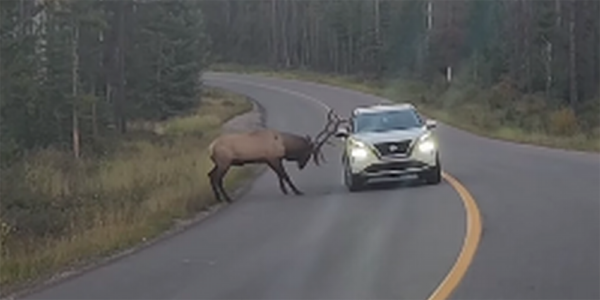

An agitated bull elk will lower his antlers towards you, paw the ground, or thrash bushes.
While it might be tempting to snap a photo of a bull elk on the road, never stop your car between a male elk and his harem of females.
A high-strung bull elk is liable to damage your car and leave you with a hefty repair bill.
“We as human beings need to bring a healthy dose of humility and respect with us if we want to keep the wildlife safe, and if we want to keep ourselves safe,” said Thomson.
Once upon a time, elk were so abundant in Alberta that they were called squirrels with antlers. Today, the elk population is decreasing in some areas, including the Bow Valley.
If an elk charges a human, it can sometimes lead to the animal being killed by local wildlife authorities, as it poses a risk to public safety.
If you were a mother with a newborn, how would you feel if people constantly surrounded you, taking your picture, and whistling at you to look up?
All wildlife, not just elk, should be treated with the same respect we give ourselves and each other.
